Tungsten Alloy Shot in MKA 1919
- Details
- Category: Tungsten Information
- Published on Wednesday, 16 October 2013 16:15
Tungsten alloy shot is made of tungsten alloy. High density, great hardness and resistance to high temperature make tungsten alloy to be one of the most sought -after material for shotgun pellets. Density of tungsten alloy shot is about 18g/cm3. Tungsten alloy shot is used as pellet of MKA 1919.
MKA 1919 is a gas operated, semi-automatic shotgun that resembles the M16 rifle and mimics the layout and placement of some of the controls. It was created by Turkish company Akdal Arms. The MKA 1919 uses a conventional gas-operated action which is located around the support tube that runs below the barrel. The return spring is also located around the same support tube which is concealed by an enlarged polymer handguard. The MKA 1919 barrel can be quickly removed from upper receiver. To charge the shotgun, the charging handle on the receiver must be pulled. The upper receiver is manufactured from an aluminum alloy while the lower receiver, along with pistol grip and shoulder stock, is manufactured as one piece from impact-resistant polymer. Akdal MKA 1919 semi-automatic shotgun has a 5 round detachable box magazine. It has a bolt release identical in location and function to the one on the M16. Manual safety also duplicates M16-style being located on the left side of the receiver above the pistol grip. Standard sights include a front post installed on the M16-style removable base and a detachable M16A2-style carrying handle with built-in diopter sight. On the upper receiver, an integral Picatinny rail can be placed which will accept detachable carrying handle or optional red-dot or other optical sight attachments.
Using tungsten alloy shot, MKA 1919 can penetrate wall or door and has good performance.
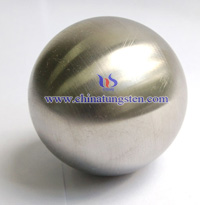
Tungsten Heavy Alloy Manufacturer & Supplier: Chinatungsten Online - http://www.tungsten-alloy.com
Tel.: 86 592 5129696; Fax: 86 592 5129797
Email: sales@chinatungsten.com
Tungsten & Molybdenum Information Bank: http://i.chinatungsten.com
Tungsten News & Tungsten Prices, 3G Version: http://3g.chinatungsten.com
Molybdenum News & Molybdenum Price: http://news.molybdenum.com.cn
How to Test If Gold Is Real at Home
- Details
- Category: Tungsten Information
- Published on Wednesday, 16 October 2013 09:27
Gold is used around the world as a form of money, an investment tool and as jewelry. It is also valued for its beauty, resistance to corrosion and conductivity of electricity. Other materials look like gold but are not as valuable. Fake gold is sold in markets around the world, and it is easy to get fooled. You can do tests at home to know whether your gold is real.
1.Place a magnet next to the item that you think is gold. Pyrite and similar materials will be attracted to a magnet. Gold does not have magnetic qualities and will not be attracted to the magnet.
2.Scrape the item across a porcelain tile in a straight line. If it leaves a black line on the tile, the item is not real gold. If the line is gold colored, the item is probably true gold.
3.Find an item that you are sure is gold and is exactly the same size as the item you are testing. Hold one item in your left hand and the other in your right hand. The items will have the same weight if they are both gold.
Gold plated Tungsten Product Manufacturer & Supplier: Chinatungsten Online - http://paper-weight.cn/
Tel.: 86 592 5129696; Fax: 86 592 5129797
Email: sales@chinatungsten.com
Tungsten & Molybdenum Information Bank: http://i.chinatungsten.com
Tungsten News & Tungsten Prices, 3G Version: http://3g.chinatungsten.com
Molybdenum News & Molybdenum Price: http://news.molybdenum.com.cn
How to Test for Real or Fake Gold
- Details
- Category: Tungsten Information
- Published on Wednesday, 16 October 2013 09:21
Buying gold can be a great long-term investment, as long as you're buying real gold. Gold is a valuable commodity, which attracts people who wish to make some money through counterfeiting. The best way to determine whether your gold is fake is to go to a jewelry store and have it tested, however this may cost you some money. Alternatively, before you venture out to go buy gold, learn a few simple ways of determining whether the gold you're looking at is real or fake.
1.Put the magnet next to the gold. Real gold will not be attracted by the magnet, however fake gold or gold-plated metal will be attracted.
2.Rub the gold with a jewelry cleaning cloth. If the gold is fake, a few hard rubs will remove the plating.
3.Place the gold into sterling silver cleaning solution. After a day, real gold will not oxidize, however plated brass will.
4.Rub face powder onto your arm using a powder pad. Rub the gold against the powder on your skin. If it makes a black mark, it is real gold or gold-plated.
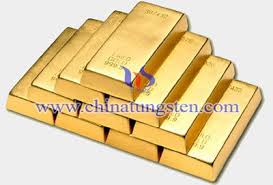
Gold plated Tungsten Product Manufacturer & Supplier: Chinatungsten Online - http://paper-weight.cn/
Tel.: 86 592 5129696; Fax: 86 592 5129797
Email: sales@chinatungsten.com
Tungsten & Molybdenum Information Bank: http://i.chinatungsten.com
Tungsten News & Tungsten Prices, 3G Version: http://3g.chinatungsten.com
Molybdenum News & Molybdenum Price: http://news.molybdenum.com.cn
The Object to to Provide a Precision Bucking Bar
- Details
- Category: Tungsten Information
- Published on Wednesday, 16 October 2013 09:17
It is thus an object to provide a precision bucking bar which will consistently spread a rivet to form a butt of uniform thickness, regardless of operator skill level, and which may be produced in traditional shapes and sizes to accommodate rivets in a variety of installations and to provide a “natural” feel to an experienced operator.
It is a further object of the present invention to provide squeeze points which will produce a properly shaped rivet butt of consistent thickness and shape regardless of operator skill level.
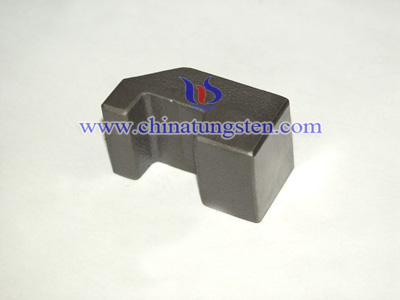
Tungsten Bucking Bar Manufacturer & Supplier: Chinatungsten Online - http://www.buckingbar.cn
Tel.: 86 592 5129696; Fax: 86 592 5129797
Email: sales@chinatungsten.com
Tungsten & Molybdenum Information Bank: http://i.chinatungsten.com
Tungsten News & Tungsten Prices, 3G Version: http://3g.chinatungsten.com
Molybdenum News & Molybdenum Price: http://news.molybdenum.com.cn
Precision Bucking Bar Devices
- Details
- Category: Tungsten Information
- Published on Wednesday, 16 October 2013 08:55
Previous attempts have been made to develop a precision bucking bar which will produce a consistent butt regardless of operator skill. Such bucking devices suffer from a number of limitations. For example, they have universally required a relative large space behind the rivet, a luxury not available in many installations; they have not been available in a variety of geometries to avoid nearby obstacles; and they have not been of a conventional shape or size and thus have not felt familiar to an experienced operator. Hence, prior art precision bucking bars have not been well received in the field.
A second method for spreading a rivet employs an apparatus commonly known as “squeezes.” Squeezes typically include a pair of removable anvils, or points, a first point shaped to receive a rivet head, and a second provides a flat surface to interface the flat end of a rivet shank. To spread a rivet with a pair of squeezes, the rivet must be close enough to the edge of the workpiece for the squeezes to reach the rivet. The rivet is placed in a hole through multiple layers of sheet metal to be joined, the anvils are placed against each end of the rivet, and the operator squeezes the handle together to produce a compressive force between the head of the rivet and the end of the shank, thereby causing the rivet to spread. Automatic squeezes are also available wherein the points are pressed towards each other by a pneumatic or hydraulic actuator. As with driving a rivet, producing a quality butt requires the operator to maintain a consistently square angle between the face of the flat anvil and the rivet shank. Producing a consistent, quality butt requires an experienced operator.
Common to either type of spreading operation, a properly shaped butt of consistent thickness is essential to achieving maximum strength of the riveted joint. An improperly shaped butt may be too weak to hold under expected stresses or may concentrate stress in a small area resulting in failure of the workpiece.
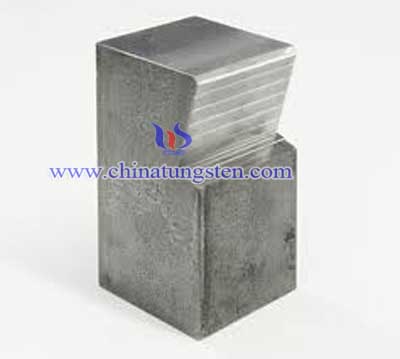
Tungsten Bucking Bar Manufacturer & Supplier: Chinatungsten Online - http://www.buckingbar.cn
Tel.: 86 592 5129696; Fax: 86 592 5129797
Email: sales@chinatungsten.com
Tungsten & Molybdenum Information Bank: http://i.chinatungsten.com
Tungsten News & Tungsten Prices, 3G Version: http://3g.chinatungsten.com
Molybdenum News & Molybdenum Price: http://news.molybdenum.com.cn
Precision Bucking Bar
- Details
- Category: Tungsten Information
- Published on Wednesday, 16 October 2013 08:54
A precision bucking bar comprising a unitary rigid structure having a bucking surface thereon and a sidewall extending from the bucking surface such that, during a spreading operation, the bucking surface cannot contact the workpiece, thus producing a square butt of uniform thickness and a method for using the same. In another embodiment, the bucking surface is incorporated into a squeeze point for squeezers.
.A precision bucking bar for spreading a rivet through a workpiece comprising: a solid unitary structure having at least a first bucking surface thereon, said bucking surface having a first side wall, wherein said first side wall extends outwardly from said first bucking surface such that, when a rivet is spread, said first side wall will prevent said first bucking surface from contacting the workpiece.
A bucking bar is basically a metal anvil which is placed against the end of the shank of a rivet. Typically, a flat surface of the bucking bar interfaces a flat end of a rivet shank. The head of the rivet is then “hammered” by a driver, thereby causing the shank to spread against the bucking bar. To produce a properly shaped butt of proper thickness, prior art bucking bars have required a skilled operator. Failure of the operator to hold the bucking bar square against the rivet shank will result in misshaped butts and bad rivet resulting in costly rework. Furthermore, prior art bucking bars are prone to wandering during the spreading operation and occasionally wander off the shank, likewise resulting in a bad rivets and subsequent rework.
Tungsten Bucking Bar Manufacturer & Supplier: Chinatungsten Online - http://www.buckingbar.cn
Tel.: 86 592 5129696; Fax: 86 592 5129797
Email: sales@chinatungsten.com
Tungsten & Molybdenum Information Bank: http://i.chinatungsten.com
Tungsten News & Tungsten Prices, 3G Version: http://3g.chinatungsten.com
Molybdenum News & Molybdenum Price: http://news.molybdenum.com.cn
Tungsten Carbide Powder Typical Applications
- Details
- Category: Tungsten Information
- Published on Tuesday, 15 October 2013 20:34
1) Machine tools
Tungsten carbide cutting surfaces are often used for machining through materials such as carbon or stainless steel, as well as in situations where other tools would wear away, such as high-quantity production runs. Most of the time, carbide will leave a better finish on the part, and allow faster machining. Carbide tools can also withstand higher temperatures than standard high speed steel tools. The material is usually called cemented carbide, hardmetal or tungsten-carbide cobalt: it is a metal matrix composite where tungsten carbide particles are the aggregate and metallic cobalt serves as the matrix.
2) Military
a) Tungsten carbide is often used in armor-piercing ammunition, especially where depleted uranium is not available or not politically acceptable. The first use of W2C projectiles occurred in German Luftwaffe tank-hunter squadrons, which used 37 mm autocannon equipped Junkers Ju 87G dive bomber aircraft to destroy Soviet T-34 tanks in World War II. Owing to the limited German reserves of tungsten, W2C material was reserved for making machine tools and small numbers of projectiles for the most elite combat pilots, like Hans-Ulrich Rudel. It is an effective penetrator due to its high hardness value combined with a very high density.
b) Tungsten carbide ammunition can be of the sabot type (a large arrow surrounded by a discarding push cylinder) or a subcaliber ammunition, where copper or other relatively soft material is used to encase the hard penetrating core, the two parts being separated only on impact. The latter is more common in small-caliber arms, while sabots are usually reserved for artillery use.
c) Tungsten carbide is also an effective neutron reflector and as such was used during early investigations into nuclear chain reactions, particularly for weapons. A criticality accident occurred at Los Alamos National Laboratory on 21 August 1945 when Harry K. Daghlian, Jr. accidentally dropped a tungsten carbide brick onto a plutonium sphere, causing the sub-critical mass to go critical with the reflected.
Tungsten Carbide Manufacturer & Supplier: Chinatungsten Online - http://www.tungsten-carbide.com.cn
Tel.: 86 592 5129696; Fax: 86 592 5129797
Email: sales@chinatungsten.com
Tungsten & Molybdenum Information Bank: http://i.chinatungsten.com
Tungsten News & Tungsten Prices, 3G Version: http://3g.chinatungsten.com
Molybdenum News & Molybdenum Price: http://news.molybdenum.com.cn
Tungsten Alloy Swaging Rod for JDAM
- Details
- Category: Tungsten Information
- Published on Tuesday, 15 October 2013 16:13
Tungsten alloy swaging rod is made of tungsten rod. The density, hardness and strength of tungsten alloy swaging rod is higher than tungsten alloy rod. Tungsten alloy swaging rod has been widely used for JDAM.
JDAM is a guidance kit that converts unguided bombs, or "dumb bombs" into all-weather "smart" munitions. JDAM-equipped bombs are guided by an integrated inertial guidance system coupled to a Global Positioning System (GPS) receiver, giving them a published range of up to 15 nautical miles (28 km). JDAM-equipped bombs range from 500 pounds (227 kg) to 2,000 pounds (907 kg). When installed on a bomb, the JDAM kit is given a GBU (Guided Bomb Unit) nomenclature, superseding the Mark 80 or BLU (Bomb, Live Unit) nomenclature of the bomb to which it is attached.
JDAM contains shaped charge warheads which made by tungsten alloy swaging rod to destroy undergound bunkers.
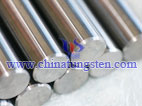
Tungsten Heavy Alloy Manufacturer & Supplier: Chinatungsten Online - http://www.tungsten-alloy.com
Tel.: 86 592 5129696; Fax: 86 592 5129797
Email: sales@chinatungsten.com
Tungsten & Molybdenum Information Bank: http://i.chinatungsten.com
Tungsten News & Tungsten Prices, 3G Version: http://3g.chinatungsten.com
Molybdenum News & Molybdenum Price: http://news.molybdenum.com.cn
Tungsten Alloy Swaging Rod for CBU-24
- Details
- Category: Tungsten Information
- Published on Tuesday, 15 October 2013 15:54
Tungsten alloy swaging rod is made of tungsten rod. The density, hardness and strength of tungsten alloy swaging rod is higher than tungsten alloy rod. Tungsten alloy swaging rod has been widely used for CBU-24.
The CBU-24 (Cluster Bomb Unit-24) is an unguided, aircraft delivered anti-personnel and anti-materiel weapon developed by the United States. Because it is an unguided weapon, the CBU-24 can be carried and dropped by any aircraft capable of carrying standard "dumb" or "iron" bombs.
The CBU-24 cluster bomb consists of a SUU-30 dispenser unit containing a payload of 665 tennis ball-sized BLU-26 or BLU-36 fragmentation submunitions, also known as bomblets.[1] Once dropped from the delivery aircraft, the CBU-24 casing breaks open in-flight and releases the individual submunitions, scattering them over a large area.
CBU-24 contains shaped charge warheads which made by tungsten alloy swaging rod to pierce armor and destroy tanks.
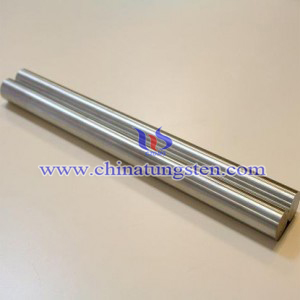
Tungsten Heavy Alloy Manufacturer & Supplier: Chinatungsten Online - http://www.tungsten-alloy.com
Tel.: 86 592 5129696; Fax: 86 592 5129797
Email: sales@chinatungsten.com
Tungsten & Molybdenum Information Bank: http://i.chinatungsten.com
Tungsten News & Tungsten Prices, 3G Version: http://3g.chinatungsten.com
Molybdenum News & Molybdenum Price: http://news.molybdenum.com.cn
Tungsten Alloy Swaging Rod for BL755
- Details
- Category: Tungsten Information
- Published on Tuesday, 15 October 2013 15:43
Tungsten alloy swaging rod is made of tungsten rod. The density, hardness and strength of tungsten alloy swaging rod is higher than tungsten alloy rod. Tungsten alloy swaging rod has been widely used for BL755.
BL755 is a cluster bomb. Its primary targets are armored vehicles and tanks with secondary soft target (anti personnel) capabilities.
The MW-1 was designed so that different types of submunitions may be loaded into its 112 tubes. The MIFF, MUSA and MUSPA mines are parachute dropped, and upon reaching the ground self-right and arm. The mines are blast-resistant and are reported to have a self-destruct devices giving them a lifespan of less than forty days.
The BL755 looks like a standard 450 kilograms (1,000 lb) general purpose bomb but with a hard "saddle" on the spine for ejector release and crutching pad loads and a distinctive large turbine-like air arming vane on the nose. The four rear fins are squared off in appearance, but on closer inspection can be seen to be hollow and telescopic. A central extruded aluminum skeleton provides seven bays long by seven bays around, each containing 21 submunitions (147 total). The submunitions are ejected by means of a central cartridge and individual inflatable bladders for each bay, operating in a similar manner to a car airbag. Ejection on the original BL755 bomb is triggered by the rotation of the arming vane, driven by the airflow.
BL755 contains shaped charge warheads which made by tungsten alloy swaging rod to pierce armor and destroy tanks.
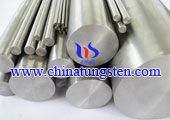
Tungsten Heavy Alloy Manufacturer & Supplier: Chinatungsten Online - http://www.tungsten-alloy.com
Tel.: 86 592 5129696; Fax: 86 592 5129797
Email: sales@chinatungsten.com
Tungsten & Molybdenum Information Bank: http://i.chinatungsten.com
Tungsten News & Tungsten Prices, 3G Version: http://3g.chinatungsten.com
Molybdenum News & Molybdenum Price: http://news.molybdenum.com.cn


 sales@chinatungsten.com
sales@chinatungsten.com